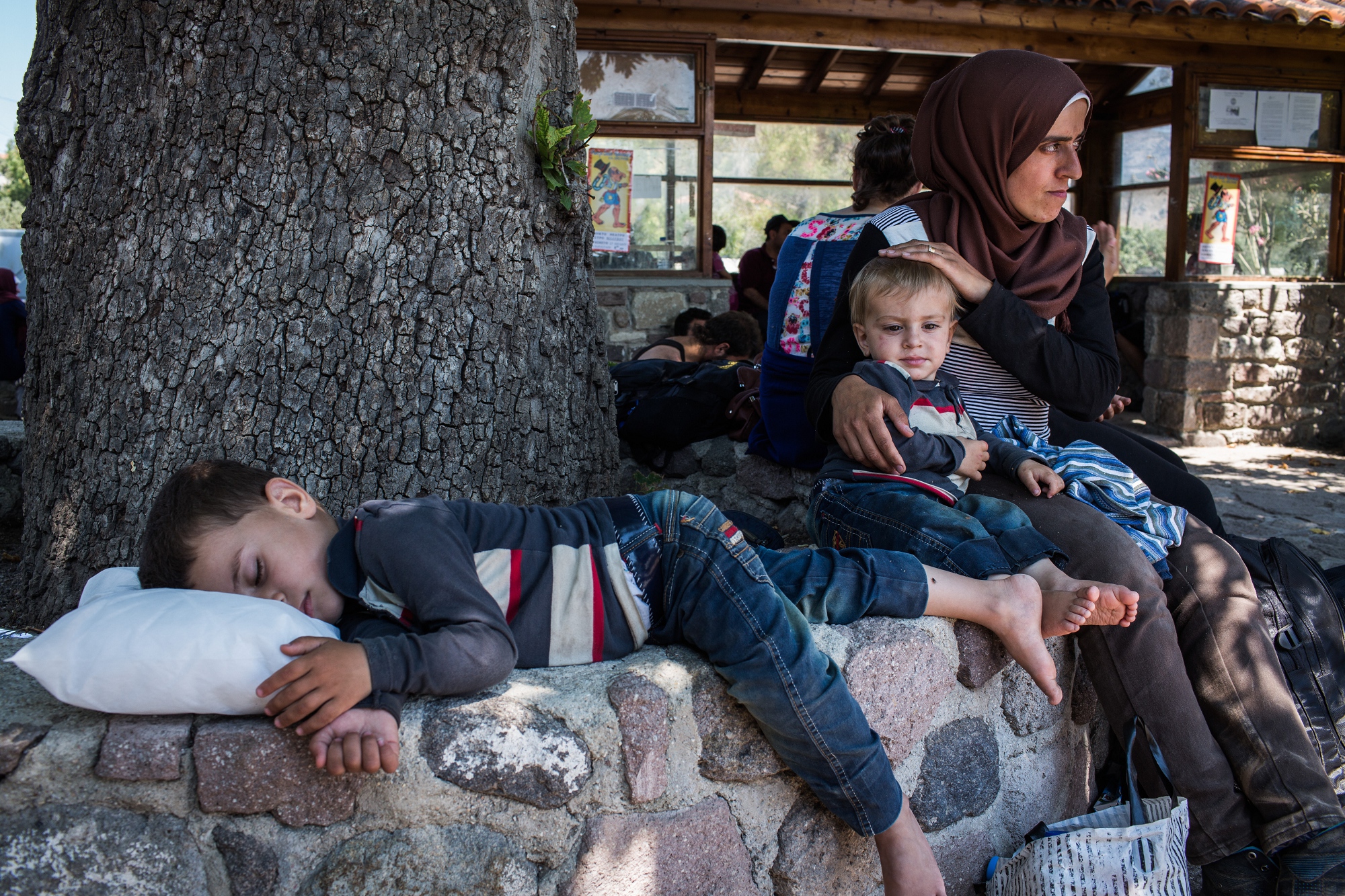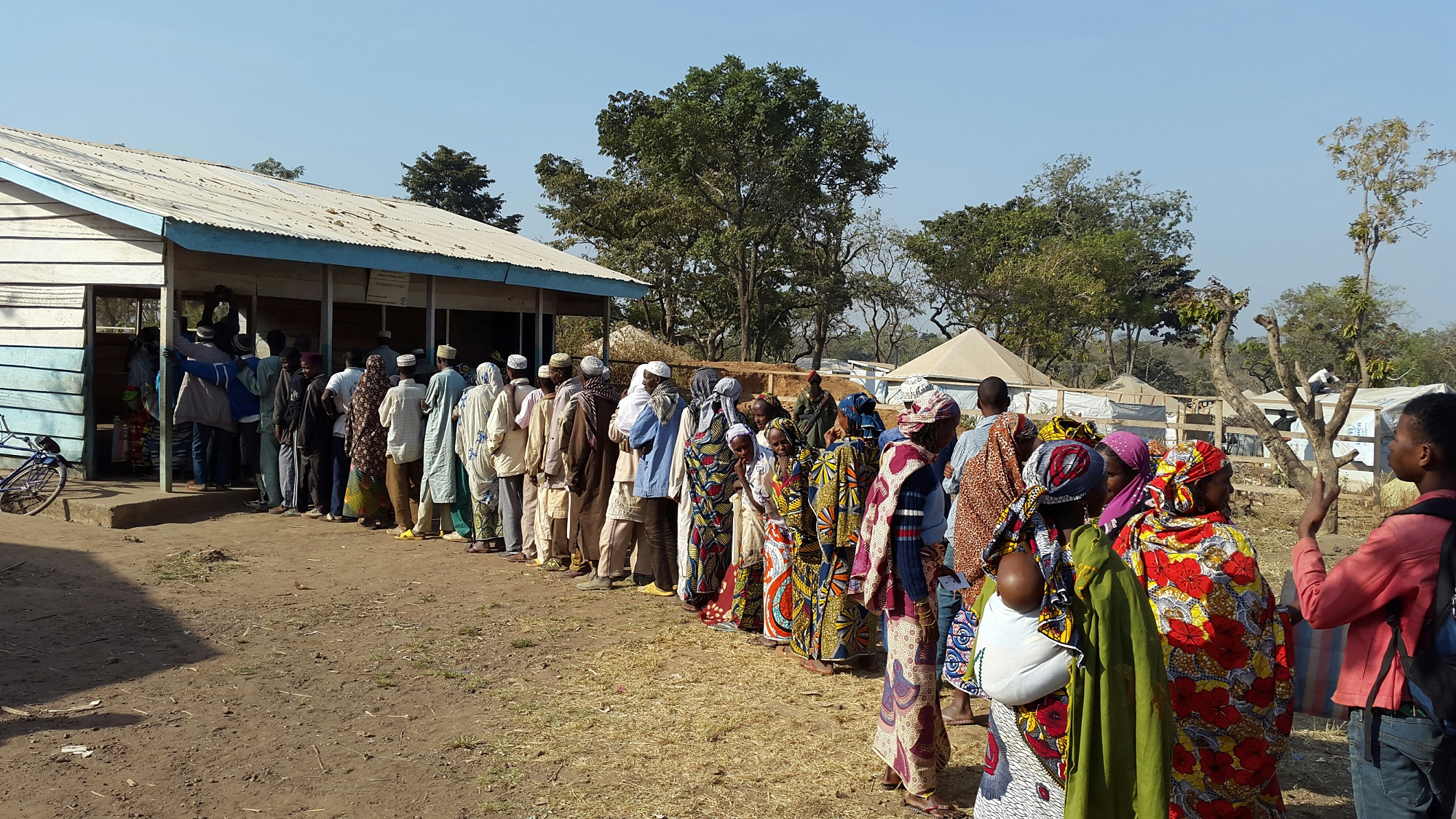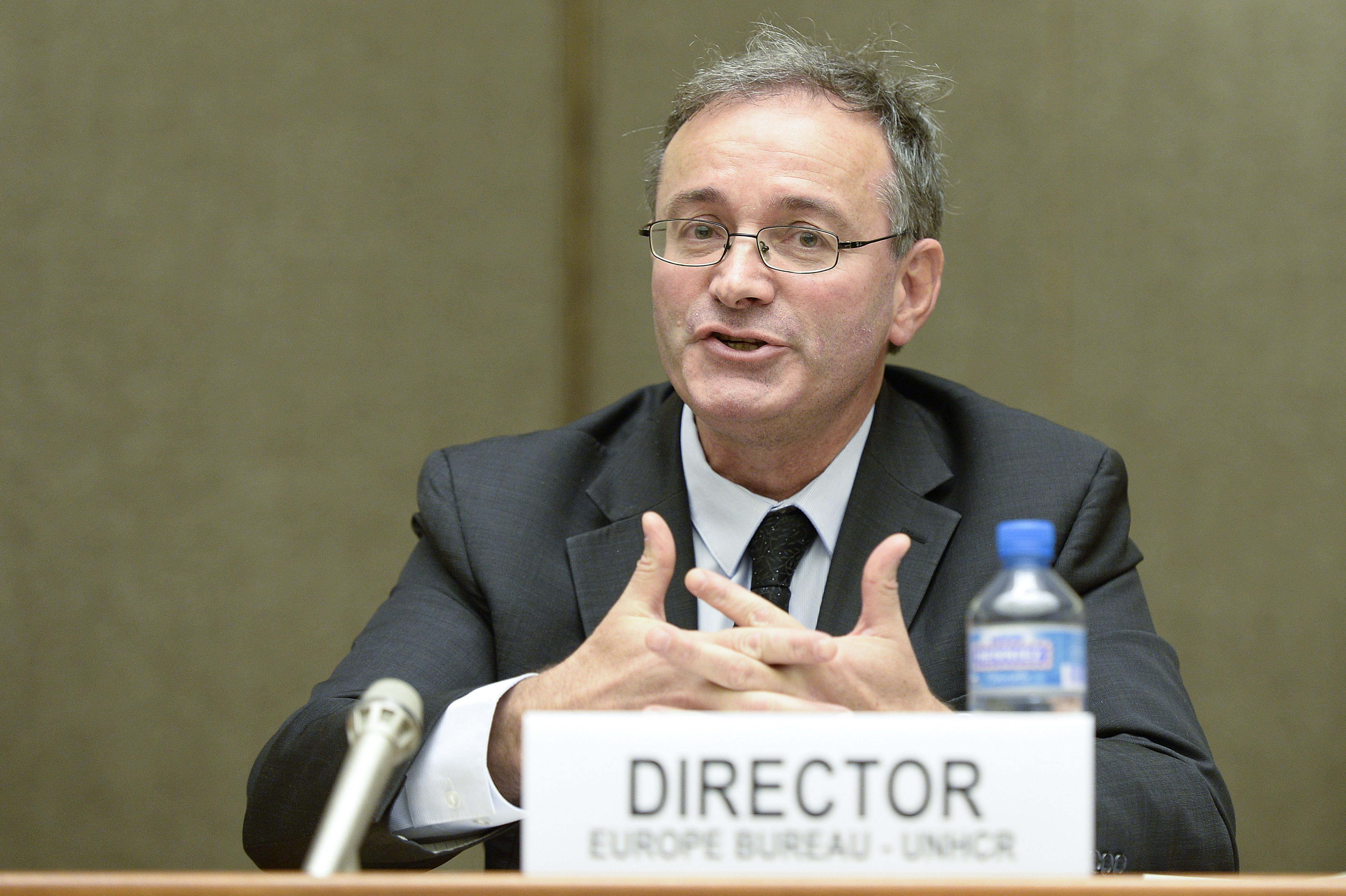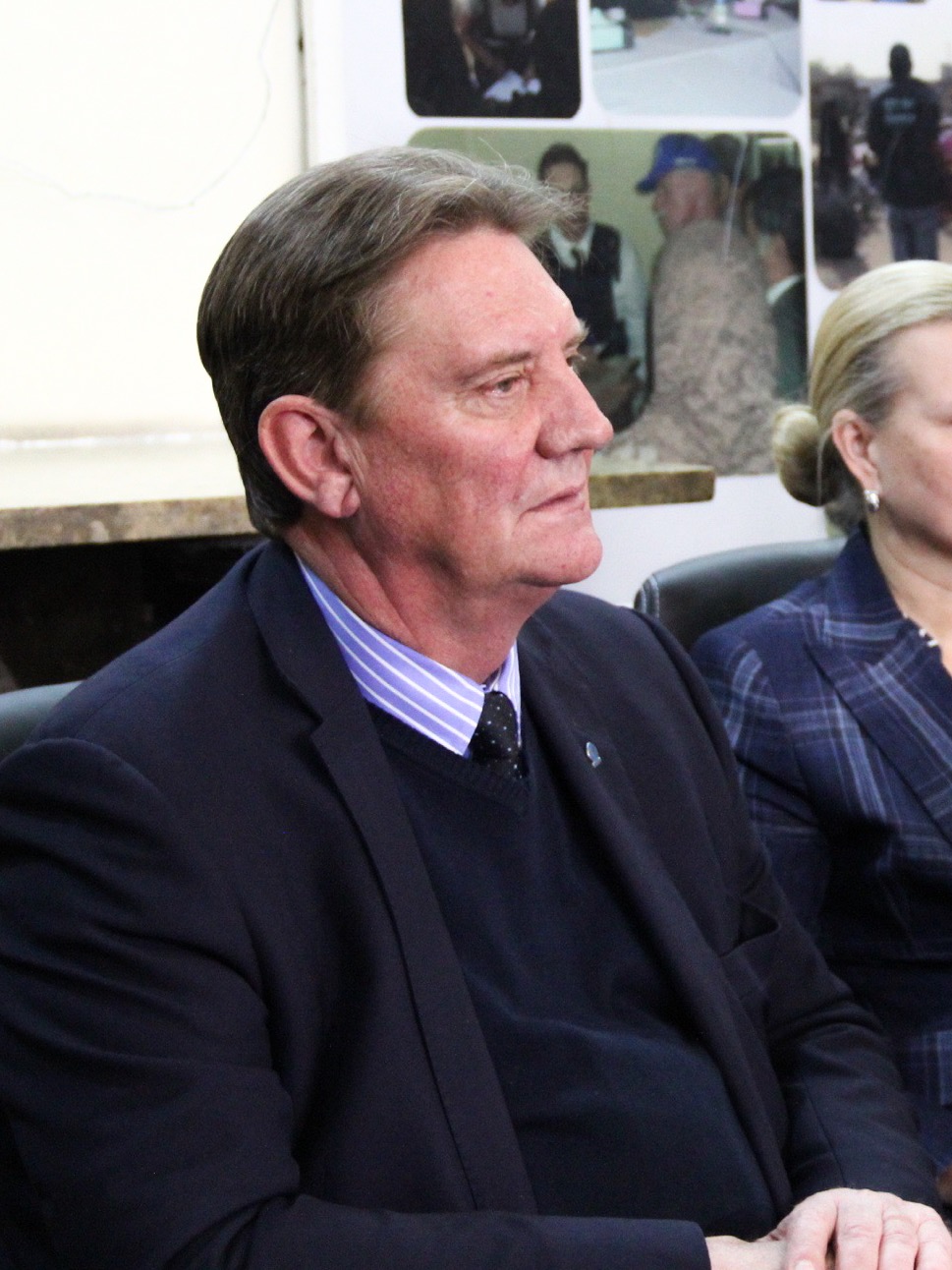Q&A: UNHCR archivists manage more than 50 years of records
Q&A: UNHCR archivists manage more than 50 years of records

GENEVA, January 25 (UNHCR) - Lee McDonald joined UNHCR six years ago to head the agency's Records and Archives Section. The Canadian and his team of experts are the guardians of millions of paper and electronic documents - "the evidence," as McDonald puts it. He spoke earlier this week in UNHCR's Geneva headquarters to Web Editors Haude Morel and Leo Dobbs. Excerpts from the interview:
When were the archives established?
The archives began around 1996. Before that there had been, since 1951, a central registry keeping the records of the organization. But it wasn't until 1996 that the records were being managed in an archival manner - by then we had accumulated close to 50 years of records.
Where are the archives?
Physically, there's almost 10 kilometres of linear shelving. Almost all of it is in the lower basement levels of this building.... We're sitting on top of it.
How many documents are we talking about?
It would be beyond me to estimate now. That 10 kilometres is not all permanent archival records, but includes things that must be kept from the financial area, for example, for audits. There's a fixed retention period in place that we've developed with users that says: "After X number of years, destroy these records."
What do the archives contain?
The main records that are kept are original letters and memos written inside UNHCR and correspondence between different offices proposing ways to respond to issues that came up - whether it's relationships with other parts of the UN, relationships with governments or directly managing the refugee situations as they evolved from Europe and then into other parts of the world.
How do you publicize records?
In one way, the invention of the World Wide Web has been fantastic for archives. In the past, researchers always had to come to institutions [to get copies of archived documents] and now there's more and more of a push to have records available online.
For example, the details of all of the ExCom meetings [UNHCR's governing Executive Committee] are available through the UN document system. Documents put up on the UNHCR website have been selected by individual parts of the agency. The Protection unit has put a lot of documents into Refworld [an online reference and research tool for those involved in status determination of asylum seekers], which has been put onto our website.
But putting information out directly is only one way to do it. Other organizations ... have decided that in response to people who critique what's happened in the past, one of the best responses is to open the archives. And that's something that the UN is doing as well. The past Secretary-General [Kofi Annan] and the current one [Ban Ki-moon] have emphasized the 20-year-rule, which we put in place to make sure that - unless there's a very good reason - records more than 20-years-old should be open for research.
Why do we need the archives?
We like to think of the archives as the evidence. And that's a good thing; it's evidence of what we've done. As an organization, we think that the full story of what we've done is always better than the bits and pieces that other people might say about us.... If a journalist, for example, asks how we know that something happened, we are able to go back into the record and back up the public statements made by UNHCR.
Who uses the archives?
The main users are the staff who have created the documents and then need to share that information with other colleagues in order for them to make decisions. If e-mail is coming in and creating a contemporary record of what's going on in Chad, then the person who received the message on his desktop can share it with colleagues.
Then there's immediate accountability, in terms of making sure that within our hierarchy we know what's happening and we can keep track of that and that our own management structures can be accountable. And in the longer term, it makes it possible for us to share historical evidence with historians and others who are making conclusions about the way UNHCR does its business.
Tell us about outside users
There's use by graduate students, mostly people who are preparing these directly related to refugee issues or people writing about areas of the world that are still in development. We often have documentation on those kinds of regions. Many of our people reporting back from the field are very good writers. Some of their documentation about what's going on in the field - and sometimes the deep field - is a lot more detailed than material that might be found in national archives.
A book by a professor from Harvard University, Samantha Power, to be published in February was researched here and in the [UN] archives in New York. It focuses on the life of Sergio Viera de Mello, but deals with many other humanitarian issues.... The last book by this author won a Pulitzer Prize.
What about archives of electronic communications?
Some national archivists believe there's a deep black hole in the history of the world from around the year 2000 because most communications now are electronic. Most governments don't have a way of keeping even the most important electronic information and making sure it can be preserved not just for two years or 10, but for 25 or 100. That's the very kind of issue we're trying to address here. UNHCR is in the lead of UN agencies trying to address the e-mail preservation issue.
With the Livelink [electronic record-keeping system] exercise at headquarters, there's been an attempt to focus over the last five years on the integration with UNHCR GroupWise [e-mail]. We help different units to select just the significant and important records that need to be kept and used for more than a couple of months. Those then go into a file structure and some of them are kept permanently as electronic records to be used in the future - just like our paper records. Others, records that are temporary - some of the financial decisions, for example - would end up being kept electronically for the period required by audit and then deleted.
What about photos?
Photos and audio-visual material are an important part of archives. Within UNHCR they are physically with our media relations area and it's a very rich collection. Copies of photos are shared with people who ask for images of the past.
How big is your section and what do your staff do?
It's got about 15 people. The main focus is on trying to help manage the current record. This might mean the paper files that gather in our record centres on each floor and then flow downstairs to be disposed of or selected for retention. Or, more and more, trying to help make sure that there is a file structure in place for the electronic record.
Some staff are also involved in managing the permissions to control access to those electronic records ... the permission structure has to be adjusted daily and there's a small team of people doing just that.








